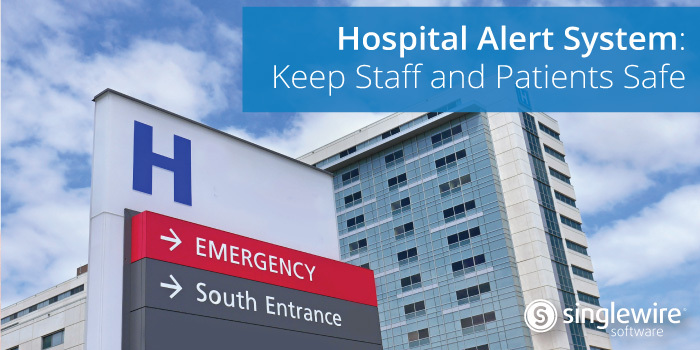Rising Concerns: Hospital Violence on the Surge
Creating a safe healthcare environment is a crucial component of delivering excellent patient care. However, in recent years, there has been a concerning rise in violence within healthcare facilities. As reported by PBS, a 2022 survey conducted by National Nurses United found that incidents of violence in hospitals have increased, with healthcare workers facing threats, verbal abuse, and even physical assaults. It also found that 40 percent of hospital nurses observed a rise in violent occurrences. In such a challenging environment, it’s vital to implement effective security measures. This blog explores the importance of a hospital alert system and how it can play a pivotal role in enhancing safety for staff, patients, and visitors.
A Hospital Alert System Offers Versatile Alerting Options
A hospital alert system offers a variety of ways to initiate alerts, ensuring that help is just a click away. Here are some of the key methods hospitals can employ to speed up the time it takes to alert staff about an incident:
- Phone alerts: Healthcare professionals can discreetly request assistance by activating a panic button configured on a landline phone at their workstation or within a patient’s room. This is a quick and efficient method to help facilitate an immediate response to potential threats.
- Wearable panic buttons: Equipping staff with wearable panic buttons provides them with a mobile and convenient way to call for help. These buttons are discreet and workers can easily access them, even in high-stress situations.
- Mounted panic buttons: Placing dedicated panic buttons strategically throughout a hospital allows for easy access to request assistance. Healthcare organizations can install them in critical areas where emergencies may occur.
- Mobile/desktop apps: These apps enable healthcare professionals to request assistance from their devices, providing location information for a more precise response. Mobile apps are especially helpful when staff are leaving work as they can still request help outside the building if they are walking to their vehicle or a bus stop.
Effective Alert Delivery: Meeting Diverse Needs
When alerts go out, a hospital alert system needs to deliver alerts effectively to ensure that the right personnel are aware of the situation taking place so they can send assistance and escalate alerting if incidents may impact others. Here are various methods of delivering alerts within a hospital to help capture people’s attention as quickly as possible:
- Text Alerts: Sending text alerts is a rapid way to disseminate information. In situations where silence is necessary, text messages can convey crucial details without creating panic.
- Audio Alerts: The power of the human voice shouldn’t be underestimated. Audio alerts provide real-time instructions and reassurance to staff, patients, and visitors while interrupting ongoing activities during high-stress events.
- Visual Alerts: Visual alerts, such as on-screen notifications and flashing lights, complement other communication methods. They ensure that organizations can convey essential information, even in noisy or chaotic environments.
Leveraging all three alerting methods offers healthcare organizations the best opportunity to alert the right people so they take immediate action.
Targeted Communication: Precision in Alerting
One of the standout features of a hospital alert system is its ability to send targeted alerts to specific groups and zones within the hospital. This level of granularity ensures that the right people receive the right information promptly. For example:
- In the case of an incident in a particular ward, healthcare teams can alert that specific area without disrupting the entire hospital.
- In emergencies requiring a coordinated response across the entire facility, the system can broadcast alerts hospital-wide, ensuring a unified and efficient reaction.
- Staff, patients, and visitors can discreetly report incidents or request assistance, fostering a safer environment.
- Sensitive areas, like visitor lounges, can be exempt from receiving alerts, to reduce anxiety for loved ones who may be waiting for news.
See how one healthcare organization leveraged the ability to create groups and zones for more effective alerting in this case study.
Find the Hospital Alert System
In today’s healthcare landscape, the rise in hospital violence underscores the need for robust security measures. A hospital alert system equipped with versatile alert initiation methods and effective delivery mechanisms, including text, audio, visual alerts, and precise targeting, is essential. Finding the right solution ensures the safety and well-being of staff, patients, and visitors, making hospitals places of healing and care where everyone can feel protected. For more information on implementing a hospital alert system tailored to your healthcare facility’s needs, visit our Healthcare page to learn about what our InformaCast mass notification and incident management software has to offer.
